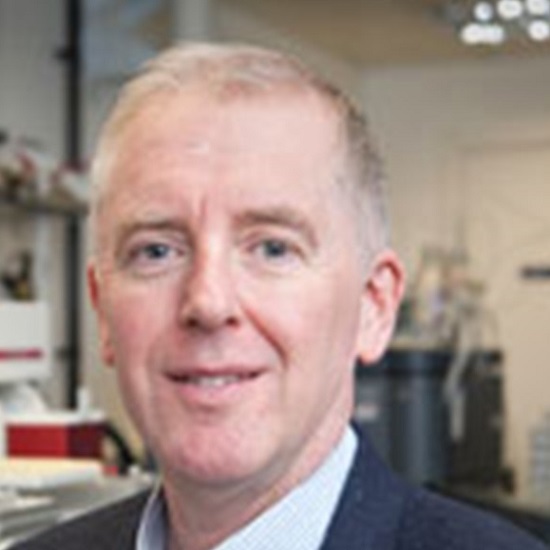Links to external sources may no longer work as intended. The content may not represent the latest thinking in this area or the Society’s current position on the topic.
Social programme: Fellows' research weekend on 'Smart Structures'
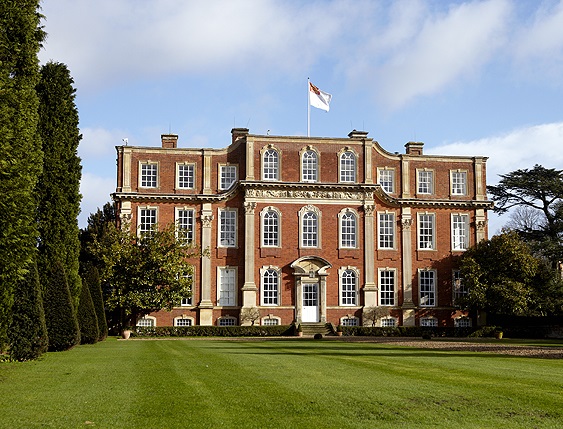
An opportunity for Fellows to meet and socialise whilst discovering and sharing science. Hosted by Professor Dame Pratibha Gai and Professor Ian Graham.
Research Weekends at Chicheley Hall are part of the Fellows' Social Programme at the Society. These relaxed weekends allow Fellows and their guests to socialise, whilst also joining informal discussions and talks on a range of scientific topics.
Join hosts Professor Dame Pratibha Gai and Professor Ian Graham for this weekend on 24 - 25 March 2018. Each day will feature a series of relaxed talks, lively discussion and opportunities to enjoy the surroundings of Chicheley Hall.
To cover some of the accommodation and catering costs we ask for a contribution of £85 from Fellows and Foreign Members. Guests of Fellows are very welcome, and we ask for a contribution from guests of £110.
To register for this Fellow's Research Weekend or for further information please contact the Scientific Programmes team on fellowship@royalsociety.org.
Organisers
Schedule
| 13:30 - 13:45 | Welcome by hosts |
|---|---|
| 13:45 - 14:35 |
Insect pheromones and beyond
The study of insect sex pheromones has contributed many extremely powerful chemical tools for manipulating insect behaviour. Although this includes both pests and beneficial insects, there has been relatively limited practical value in terms of pest management or conservation. The lepidopterous sex pheromones, which have received most attention, are powerful attractants but only for the male insects. The first identification of aphid sex pheromones and the first sex related pheromones for haematophagous insects, including mosquitoes and sandflies, opened up new possibilities but practical value has still been difficult to realise. The chemical synthesis is complicated by very strict stereochemical requirements and sustained delivery is hampered by high volatility and chemical instability. It has long been considered possible to overcome such problems eventually by using GM to produce the pheromone, for example from a crop to be defended against insect attack, and this has been technically achieved for the aphid alarm pheromone in wheat. However, although the behavioural impact on aphids and their parasites was impressive in the lab, the precise conditions for response were not achieved in field trials. Another group of signal chemicals or semiochemicals, in addition to the pheromones, that is now showing promise relates to host recognition and location. Indeed, by delivery from companion plants in agricultural situations operating with low external inputs such as is necessary for small holder farming in sub-Saharan Africa, plant stress related semiochemicals can control insect pests including the fall armyworm currently causing havoc in the region. Similar stress related semiochemistry is now showing promise for protection of farm animals from insect-vectored pathogens. These host derived semiochemicals may also be developed more effectively by GM technologies in ongoing studies. 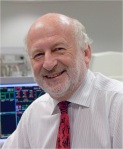
Professor John Pickett CBE FRS, Cardiff University, UK

Professor John Pickett CBE FRS, Cardiff University, UKProfessor John A Pickett is originally an organic chemist (BSc 1967, PhD 1971, DSc 1993) who has gained worldwide recognition, with many honours and awards to his name, for his investigations into volatile natural products that affect the behaviour and development of animals and other organisms (semiochemicals). He is a world authority on semiochemicals in insect behaviour and plays a leading rôle in the move away from the traditional use of wide-spectrum pesticides to more precise control through compounds targeted against specific pests at critical stages in their life cycles. Recent practical successes include a programme for controlling stem borer pests and striga weeds in Africa, where thousands of subsistence farmers have already adopted systems for exploiting the natural product chemicals of certain companion crops. In 1976, John moved to Rothamsted Research to lead a team working on new methods of pest control. He headed the Department of Biological Chemistry there from 1984-2010, and now holds the first Michael Elliott Distinguished Research Fellowship at Rothamsted. As well as fulfilling this prestigious new role, he continues to lead research into the field of chemical ecology. |
| 14:35 - 15:25 |
The Nanosculpting and Nanoengineering of materials at the interfaces of science
Nano to macro-scale, synthetic or natural; particles can have unique forms engineered by nature or humans, and yet their shapes are often determined by their environments. At one extreme synthetic particles comprising structures with hierarchical shells can be described as being coated by grass-like fats and trees, where their shapes are distorted by the phases of matter they exist. Nanosculpting can create new “Janus”, “Saturn” and “Boojum” supermolecules, which can have potential applications in optical filters and meta-materials. At the other extreme, nature provides us with a vast array of unique monodisperse and potentially anisotropic particles based on spores and pollen, with length scales of microns and above. When the biologically active content of such particles is removed the resulting deflated spheres and ellipsoids can be used as empty vesicles, and reflated for the transport materials, such as dyes, magnets, and insulin. In between the nano- and macro-structures of particles there exists a strange regime that is neither; where the molecules appear as molecular grains in the macroworld, and have properties similar to those of granular matter. The molecules are of unusual shape, densely pack together, and behave like polymers. They form helical and plaited macrostructures without the need for local chirality or even molecular interactions. They exhibit anisotropic flow properties, with the possibility of exhibiting anisotropic entropic behaviour. Thus, within the interfaces separating the sciences, and the regime between the macro and nano-worlds, there is much to explore. 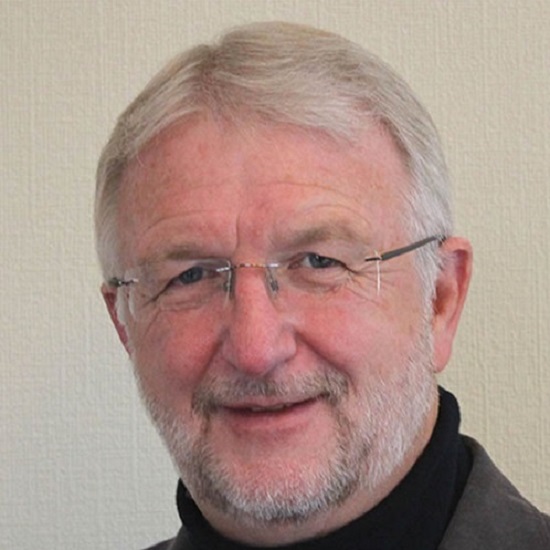
Professor John Goodby FRS, University of York, UK

Professor John Goodby FRS, University of York, UKJohn Goodby is a materials chemist who studies liquid crystals, complex fluids and self-organising systems. His work has a number of varied commercial applications, most notably in the design and development of materials used in modern display devices, and gels and biopolymers for potential applications in biomedical devices. His many research highlights include the development of the structural classification of smectic liquid crystals, the discovery of many new states of matter including the ‘twist grain boundary phase’ and ‘hexatic’ phases, and elucidation of chiral liquid crystals, including the ferroelectric and antiferroelectric phases. John has received many accolades in recognition of his work such as Honored Membership of the International Liquid Crystal Society in 2010, the Materials for Industry–Derek Birchall Award of the Royal Society of Chemistry in 2013, as well as the AkzoNobel UK Science Award in 2014. He has also served in a number of scientific leadership roles, including President of the International Liquid Crystal Society and Chair of the British Liquid Crystal Society. |
| 15:25 - 15:45 | Tea |
| 15:45 - 16:35 |
Glycans and their receptors are amongst nature’s smartest structures
All living cells are coated with a sugar-rich layer which is called the glycocalyx. Clusters of sugars (glycans), on the periphery of the glycocalyx serve as ligands for sugar-recognition proteins, called lectins, on partner cells. Glycan-lectin recognition can be exquisitely specific. Many important biological processes depend on the ability of cells to appropriately communicate with each other via these sugar-lectin interactions and to respond accordingly. For example, lectins on the surfaces of viruses and bacteria are known to recognise sugars on target cells and attach to them as the first step of infection. Conversely the adaptive immune system is triggered when sugars on the surfaces of pathogens bind to lectins expressed by cells of the host immune system. Although these examples of glycan-lectin recognition are now relatively well understood, many biological processes that are likely to be similarly controlled by glycan-lectin interactions remain enigmatic. For example, how do immune cells in the gut distinguish between beneficial and harmful microbes, how do cancer cells evade the immune system, and how does a developing foetus escape rejection by the mother despite expressing "foreign" antigens? This talk will provide insights into the roles of glycans and lectins as “smart” molecules in biological recognition. 
Professor Anne Dell CBE FMedSci FRS, Imperial College London, UK

Professor Anne Dell CBE FMedSci FRS, Imperial College London, UKAnne Dell was a chemistry undergraduate at the University of Western Australia before undertaking a PhD at the University of Cambridge supported by an 1851 Exhibition Research Scholarship. She moved to Imperial College London for her postdoc where she rose through the ranks to a Personal Chair in 1991. She was Head of the Biochemistry Department from 1999-2001. She was elected to the Fellowship of the Royal Society in 2002 and was awarded a CBE in recognition of her services to science in 2009. Anne was amongst the first investigators to apply soft ionization mass spectrometry to biopolymers. Over the past thirtyfive years she has been at the leading edge of the development of mass spectrometric methods for glycomic and glycoproteomic analyses, especially in the area of biomedical research. Her laboratory provides structural underpinning for programmes of research seeking to define the biological roles that carbohydrates play in health and disease. |
| 18:00 - 18:50 |
From smart lighting to smart earthquake prediction
In a 2016 report, Goldman Sachs said: “The rapid adaptation of LEDs in lighting marks one of the fastest technology shifts in human history.” In the near future LED lighting will move from being passive to active: to “smart lighting”. There is increasing evidence that sunlight (if not excessive!) is good for our health. Next generation smart LED lighting will mimic sunlight indoors and reproduce the changing spectrum of sunlight from dawn to dusk. Next generation smart lighting will be used for communications, called LiFi, which will mimic WiFi but have certain key advantages. Next generation smart lighting will be central to the Internet of Things (IoT) and to water purification. Recent research on optimising the structure of GaN LEDs using machine learning has been used to predict laboratory earthquakes one week in advance by analyzing the acoustic signals emitted, and this is looking promising for the prediction of real earthquakes. At present, the acoustic signals only reliably give ten seconds warning of an earthquake. 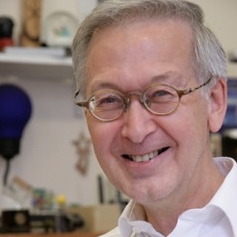
Sir Colin Humphreys CBE FREng FRS, Queen Mary University of London, UK

Sir Colin Humphreys CBE FREng FRS, Queen Mary University of London, UKColin is Professor of Materials Science at Queen Mary University of London, Distinguished Research Fellow at the University of Cambridge, and a Fellow of Selwyn College, Cambridge. He founded the Cambridge Centre for Gallium Nitride and set up two spin-off companies to exploit the research of his group on low-cost LEDs for lighting. The companies were acquired by Plessey, which is manufacturing LEDs based on this technology at their factory in Plymouth, UK. He founded the Cambridge/Rolls-Royce Centre for Advanced Materials for Aerospace. Materials developed in the Centre are now flying in Rolls-Royce engines. He recently set up a new company, Paragraf, to exploit the research of his group on next-generation large-area graphene, which promises to revolutionise a wide range of products including sensors, solar cells and electronic devices. Paragraf moved into premises in 2018 and is already employing 21 people. |
|---|
| 10:00 - 10:15 | Welcome by hosts |
|---|---|
| 10:15 - 11:05 |
Active matter: nature’s machines
Active materials such as bacteria, molecular motors and self-propelled colloids are nature’s engines. They extract energy from their surroundings at a single particle level and use this to do work. Active matter is becoming an increasingly popular area of research because it provides a testing ground for the ideas of non-equilibrium statistical physics, because of its relevance to the collective behaviour of living creatures, from cells to starlings, and because of its potential in designing nanomachines. Dense active matter shows mesoscale turbulence, the emergence of chaotic flow structures characterised by high vorticity and topological defects. Researchers are starting to consider how mesoscale turbulence might be harnessed to provide coherent flows and sources of energy. Moreover the ideas of active matter suggest new ways of interpreting cell motility and cell division. In particular recent results indicate that active topological defects may help to regulate turnover in epithelial cell layers and contribute to controlling the structure of bacterial colonies. 
Professor Julia Yeomans FRS, University of Oxford, UK

Professor Julia Yeomans FRS, University of Oxford, UKJulia Mary Yeomans is a theoretical physicist researching the behaviour of soft condensed matter, such as polymers, gels and liquid crystals, at the tiny scale where viscous forces are high compared to inertial forces. Her work has advanced our understanding of droplets in microchannels, of super-water-repellent surfaces and of how certain bacteria ‘swim’. Julia’s research is important to areas as diverse as inkjet printing and the development of artificial ‘microswimmers’ for medical use. As well as analytical techniques, Julia applies sophisticated computational methods to model behaviour at close to the molecular level. This brings together hydrodynamics — how fluids behave in motion — and statistical physics, which is the use of probabilistic methods to predict the collective behaviour of many individual systems. Julia’s work was recognised with the EPJE Pierre Gilles De Gennes Lecture Prize in 2013. She also has a keen interest in outreach work, including service on the advisory panel of the Institute of Physics Women in Physics Group. |
| 11:05 - 11:55 |
Assessing photonic Nano-structures
Nano-structures of suitable dielectric materials (such as silver or gold) can have large cross sections for scattering and absorption of light in particular spectral ranges. After centuries where use of this was made in stained glass windows, more scientific optical scattering experiments were initiated by Faraday’s work on colloidal suspensions and Mie’s analysis with Maxwell’s equations of the scattering resonances in simple spheres. These resonances, later identified with the surface plasmons of Ritchie, can now be studied in detail on individual nanostructures by electron microscopy where the precise geometry and composition can be assessed on the atomic scale. Moving on from spheres and cylindrical rods, structures of increasing complexity such as tori, starfish and slit ring resonators can be characterised. With nearly the same precision, the optical response of the structure can be probed by photon-induced near field electron microscopy (PINEM). Through light scattering as well as near field enhancement of light intensities, a wide range of potentially exciting applications has been opened up in solar cells, Raman spectroscopy, photo-catalysis, medicine and even in perfect optical imaging and cloaking. After its remarkably slow gestation, the field is now exploding dramatically. Assessing the current state of these sometimes over-hyped developments is however inevitably a challenge. 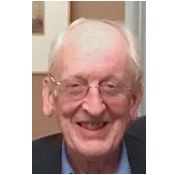
Professor Archie Howie CBE FRS, University of Cambridge, UK

Professor Archie Howie CBE FRS, University of Cambridge, UKArchie Howie has worked on physics problems of electron microscopy for over 60 years. He started out with Peter Hirsch and Mike Whelan on diffraction contrast imaging of dislocations and developed with Whelan the dynamical theory of electron diffraction to explain the images. This was extended to deal with weak beam images in collaboration with Pratibha Gai. Archie then spent a few years attempting with Ondrej Krivanek and John Rodenburg to determine the structure of 'amorphous' materials from high resolution electron microscope images. With his colleague Mick Brown he obtained the second VG STEM which supported pioneering work with Mike Treacy and Steve Pennycook on high angle annular dark field imaging of catalysts. The first aloof beam energy loss spectra obtained with this instrument by Laurie Marks opened the door to the dielectric theory of localised valence spectroscopy and the study of plasmon excitations on complex nanostructures. Dynamic processes stimulated by the electron beam have been a frequent feature in this work though usually something to be understood so that they could be avoided or at least minimised. He previously investigated the possible role in thin crystal image contrast of thermally excited flexural modes. In cryo electron microscopy where the specimen may be subject to buckling stresses from the freezing process or due to charge accumulation, flexural movement may be significant. |


